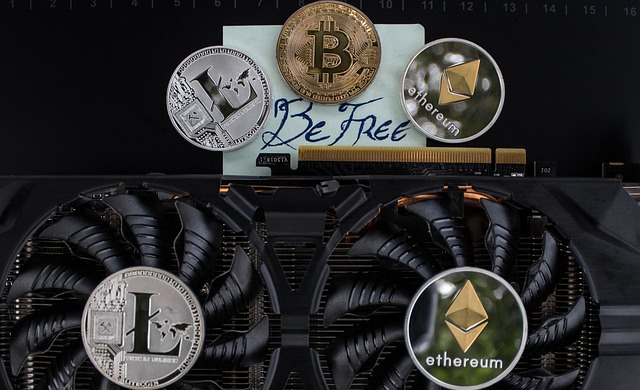Decentralized Finance Architecture: The Future of Finance
Decentralized Finance Architecture: The Future of Finance

What is Decentralized Finance?
Decentralized Finance, also known as DeFi, refers to a financial system that operates without the need for traditional intermediaries, such as banks or financial institutions. Instead, it leverages blockchain technology to provide open and permissionless access to financial services and products. In this decentralized ecosystem, individuals can transact directly with each other, enabling faster and more secure transactions.
One of the main advantages of decentralized finance architecture is its ability to empower individuals and give them full control over their finances. With DeFi, anyone with an internet connection can access a wide range of financial services, such as lending, borrowing, and investing, without the need for a bank account or credit history. This inclusivity eliminates the barriers typically faced by individuals in underserved or unbanked regions, providing them with equal opportunities to participate in the global economy. Moreover, decentralized finance architecture promotes transparency and eliminates the need for intermediaries, reducing the costs and inefficiencies associated with traditional financial systems.
The Advantages of Decentralized Finance Architecture
Decentralized finance architecture offers several advantages that have the potential to revolutionize the financial industry. One of the key advantages is the elimination of intermediaries. Traditional financial systems often involve multiple middlemen, such as banks or brokers, which can lead to delays, increased costs, and a lack of transparency. With decentralized finance, transactions can occur directly between individuals or entities, cutting out the need for intermediaries and reducing associated fees and complexities. This streamlined process allows for faster transactions and greater control over one’s financial assets.
Another advantage of decentralized finance architecture is increased accessibility. Traditional financial systems can be exclusionary, with many people facing barriers when it comes to accessing basic financial services. This is particularly true for individuals in underserved or unbanked populations. Decentralized finance aims to address these inequalities by leveraging technologies such as blockchain and smart contracts to create an inclusive financial ecosystem. Through decentralized applications (dApps) and digital wallets, individuals can access financial services, such as lending or investing, without relying on traditional banking institutions. This opens up opportunities for financial empowerment and economic growth, especially for those who have been historically marginalized by traditional systems.
The Role of Blockchain Technology in Decentralized Finance
Decentralized Finance (DeFi) relies heavily on blockchain technology to revolutionize the way financial systems operate. Blockchain, commonly associated with cryptocurrencies like Bitcoin, is essentially a decentralized ledger that records transactions across multiple computers. Its underlying technology provides a secure and transparent framework for DeFi applications to function.
One key advantage of using blockchain technology in DeFi is the elimination of intermediaries. In traditional financial systems, there are numerous intermediaries such as banks, payment processors, and clearinghouses involved in processing transactions. These intermediaries not only increase costs but also introduce delays and potential points of failure. By leveraging blockchain technology, DeFi projects can create decentralized protocols that facilitate peer-to-peer transactions without the need for intermediaries. This not only increases efficiency and lowers costs but also enhances security and transparency.
• Blockchain technology eliminates the need for intermediaries in DeFi
• Intermediaries like banks and payment processors increase costs and introduce delays
• Decentralized protocols in DeFi allow for peer-to-peer transactions without intermediaries
• Increased efficiency, lower costs, enhanced security, and transparency are benefits of using blockchain technology in DeFi.
How Decentralized Finance is Disrupting Traditional Financial Institutions
Decentralized finance (DeFi) is causing a significant disruption to traditional financial institutions. With its innovative architecture and utilization of blockchain technology, DeFi offers a whole new set of advantages that traditional institutions struggle to match. One of the key ways DeFi is disrupting traditional financial institutions is by eliminating the need for intermediaries. In the traditional financial system, banks and other intermediaries act as middlemen, adding layers of complexity and fees to every transaction. However, with DeFi, transactions can be executed directly between individuals through smart contracts, cutting out the need for intermediaries altogether. This not only streamlines the process but also reduces costs and eliminates the risk of human error or fraud that can be associated with intermediary involvement.
Moreover, DeFi is also democratizing financial services, providing access to individuals who were previously underserved or excluded by the traditional financial system.

The Key Components of Decentralized Finance Architecture
Decentralized finance architecture revolves around several key components that work together to create a robust and efficient financial system. One of the essential elements is smart contracts, which are self-executing agreements programmed on the blockchain. These contracts automate transactions and ensure that they are executed without the need for intermediaries, reducing costs and increasing transparency. With smart contracts, individuals can engage in various financial activities, such as lending, borrowing, and trading, with greater security and reliability.
Another crucial component of decentralized finance architecture is liquidity pools. These pools are formed by individuals who contribute their assets to a common pool, enabling users to trade and access liquidity instantly. By pooling together assets, liquidity is shared among participants, minimizing the impact of large trades on the market and creating a more efficient ecosystem. Liquidity pools provide a foundation for decentralized exchanges, where users can trade cryptocurrencies directly with one another, without relying on traditional intermediaries. This removes the need for costly middlemen and opens up a world of possibilities for individuals to transact freely and autonomously.
The Challenges and Risks of Decentralized Finance
Decentralized finance (DeFi) is a rapidly growing sector that presents numerous challenges and risks. One of the primary challenges is the lack of regulation and oversight.

Another challenge is the potential for smart contract vulnerabilities. Smart contracts, which are self-executing agreements built on the blockchain, are the backbone of many DeFi applications. However, these contracts are not immune to bugs or coding errors, which can be exploited by malicious actors. The infamous DAO hack in 2016 is a prime example, where millions of dollars worth of cryptocurrency were stolen due to a flaw in the smart contract code. Such vulnerabilities pose a significant risk to the security and stability of DeFi applications, and developers must ensure thorough testing and auditing to mitigate these risks.
The Potential Impact of Decentralized Finance on the Global Economy
Decentralized finance, commonly known as DeFi, has the potential to revolutionize the global economy in various ways. One significant impact could be seen in the accessibility of financial services. With traditional financial systems, many individuals and businesses in underserved communities face numerous barriers, such as high transaction fees, limited credit access, and exclusion from the formal banking sector. In contrast, decentralized finance allows anyone with an internet connection to access financial services instantly and without intermediaries. This inclusivity could empower millions of people worldwide, fostering economic growth and reducing inequality.
Another potential impact of decentralized finance on the global economy is its ability to foster financial innovation. Traditional financial institutions often operate within rigid frameworks and are slow to adopt technological advancements. DeFi, on the other hand, harnesses the power of blockchain technology to create decentralized applications and platforms that enable new financial products and services. These innovations, such as decentralized lending, automated market-making, and yield farming, can increase efficiency, lower costs, and create new opportunities for individuals and businesses. By promoting innovation, decentralized finance has the potential to drive economic growth and bring about significant changes to the global financial landscape.
Examples of Successful Decentralized Finance Projects
Cryptocurrency has paved the way for numerous successful decentralized finance projects, revolutionizing the traditional financial landscape. One noteworthy project is MakerDAO, an open-source platform built on the Ethereum blockchain. MakerDAO allows users to create and manage decentralized stablecoins, such as their flagship cryptocurrency DAI. The innovative aspect of MakerDAO lies in its decentralized governance model, where MKR token holders have the power to influence critical decisions. This project has gained considerable popularity due to its ability to provide stability in a volatile market while empowering users to have control over their financial assets.
Another significant project in the decentralized finance space is Compound Finance. This protocol facilitates the borrowing and lending of cryptocurrencies in a trustless manner while ensuring interest rates are determined by the market. Through smart contracts, users can provide their assets, such as Ether or other ERC-20 tokens, as collateral and earn interest or borrow assets based on the value of their collateral. Compound Finance has gained traction due to its transparency and efficiency, offering higher interest rates than traditional financial institutions, and attracting liquidity from users all around the world.
These examples of successful decentralized finance projects represent a global trend towards financial systems that prioritize decentralization, transparency, and user control. As more projects emerge, the potential for decentralized finance to disrupt traditional financial institutions becomes increasingly apparent. With greater adoption and development, decentralized finance has the potential to redefine how we interact with money, unlocking new opportunities for individuals and businesses alike.
The Future Potential and Growth of Decentralized Finance Architecture
With the rapid growth of decentralized finance (DeFi) architecture in recent years, the future potential for this disruptive technology is both exciting and promising. As more individuals and institutions recognize the benefits of DeFi, there is a growing demand for innovative financial solutions that offer greater transparency, accessibility, and control. This surge in interest is fueling the development of new DeFi projects and platforms, which are expected to shape the future of finance.
One of the key factors driving the growth of decentralized finance architecture is its ability to democratize financial services. By leveraging blockchain technology, DeFi eliminates the need for intermediaries and empowers individuals to have full control over their assets and transactions. This opens up a world of possibilities for financial inclusion, allowing people who were previously underserved or excluded from the traditional financial system to access a wide range of innovative financial services. Moreover, the programmability of smart contracts enables the automation of financial processes, reducing human error and increasing efficiency. This efficiency, combined with greater accessibility and transparency, has the potential to transform industries such as lending, insurance, and investment, ultimately reshaping the way we interact with money.
How to Get Started with Decentralized Finance
Getting started with decentralized finance may seem like a daunting task, but it doesn’t have to be. The first step is to familiarize yourself with the basic concepts and principles of decentralized finance. This means understanding how blockchain technology works and its role in enabling decentralized financial transactions. There are numerous online resources, tutorials, and communities that can help you grasp these foundational concepts.
Once you have a good grasp of the underlying principles, the next step is to choose a decentralized finance platform or project to get involved with. There are several options available, each with its own unique features and advantages. It’s important to do your research and find a project that aligns with your financial goals and values. Some popular decentralized finance projects include Ethereum, MakerDAO, and Compound. Joining their communities, reading their whitepapers, and participating in discussions can give you a deeper understanding of how they work and what they have to offer.
Remember, getting started with decentralized finance is a learning process, so don’t be afraid to ask questions, seek guidance, and engage with the community. With time and dedication, you can navigate this exciting new landscape and take advantage of the various opportunities it presents. So take that first step, immerse yourself in the world of decentralized finance, and explore the potential it holds for your financial future.
What is Decentralized Finance?
Decentralized Finance, or DeFi, refers to the use of blockchain technology and smart contracts to create financial systems that operate without intermediaries like banks or traditional financial institutions.
What are the advantages of Decentralized Finance architecture?
Decentralized Finance offers benefits such as increased transparency, improved accessibility, lower costs, and the ability to create and participate in innovative financial products and services.
How does Blockchain technology play a role in Decentralized Finance?
Blockchain technology enables the secure and transparent recording of financial transactions in a decentralized manner. It provides the foundation for trustless smart contracts and helps ensure the integrity of the decentralized finance ecosystem.
How is Decentralized Finance disrupting traditional financial institutions?
Decentralized Finance is challenging the traditional financial system by offering alternative ways to access and manage financial services. It allows individuals to have more control over their own money and eliminates the need for intermediaries.
What are the key components of Decentralized Finance architecture?
The key components of Decentralized Finance architecture include blockchain networks, smart contracts, decentralized applications (DApps), and decentralized exchanges (DEXs).
What are the challenges and risks of Decentralized Finance?
Some challenges and risks of Decentralized Finance include scalability issues, regulatory uncertainties, potential security vulnerabilities, and the risk of financial loss due to smart contract bugs or hacks.
What could be the potential impact of Decentralized Finance on the global economy?
Decentralized Finance has the potential to democratize financial services, increase financial inclusion, and reshape the global economy by providing access to financial tools and services to underserved populations.
Can you provide examples of successful Decentralized Finance projects?
Some successful Decentralized Finance projects include MakerDAO, Compound, Uniswap, Aave, and Synthetix. These projects have gained popularity by offering decentralized lending, borrowing, and trading services.
What is the future potential and growth of Decentralized Finance architecture?
The future potential of Decentralized Finance is immense, as it continues to attract investment and innovation. It has the potential to revolutionize traditional finance, unlock new economic opportunities, and reshape the financial landscape.
How can I get started with Decentralized Finance?
To get started with Decentralized Finance, you can begin by familiarizing yourself with blockchain technology and understanding how it powers decentralized finance applications.

Todays Featured Product:
Buy, exchange and grow your crypto securely with a Ledger hardware wallet, combined with the Ledger Live app. It’s never been easier to keep your crypto safe and accessible. Buy direct from Ledger.com and get todays Special Offers Here.




